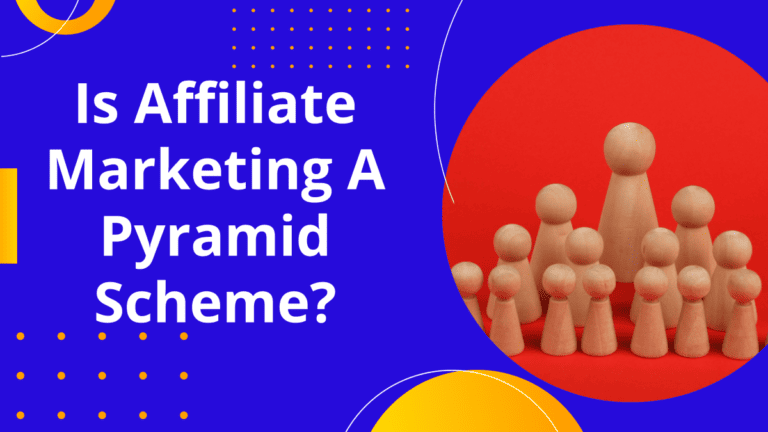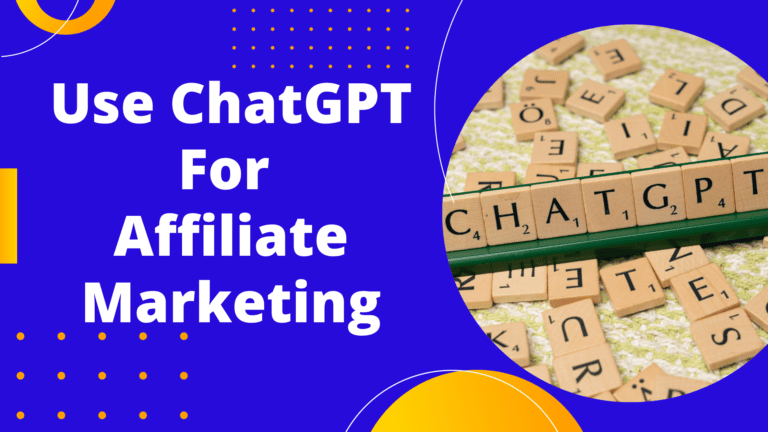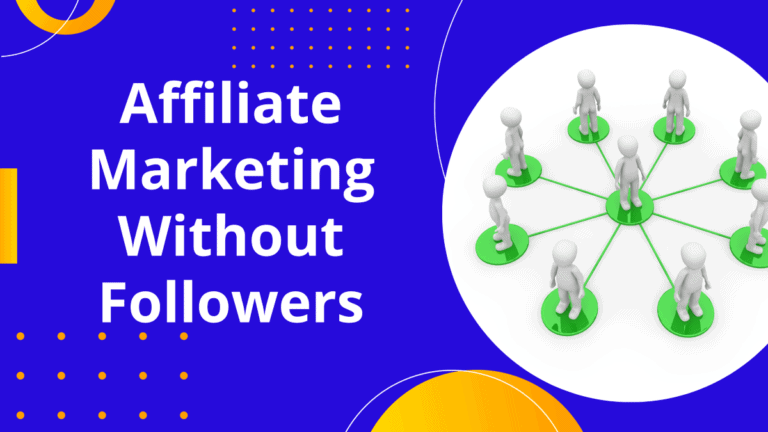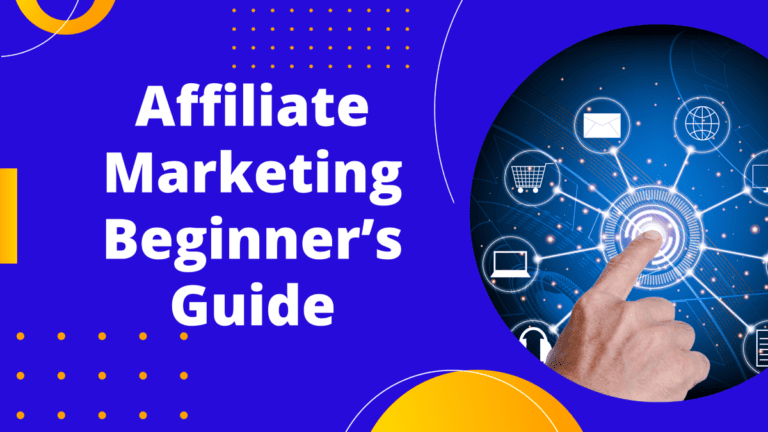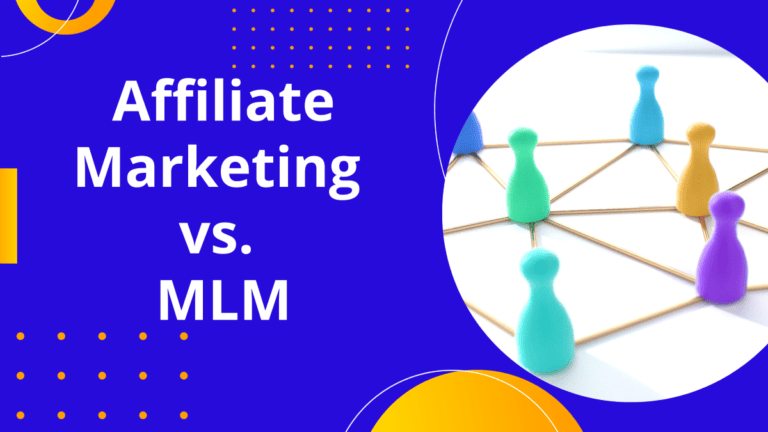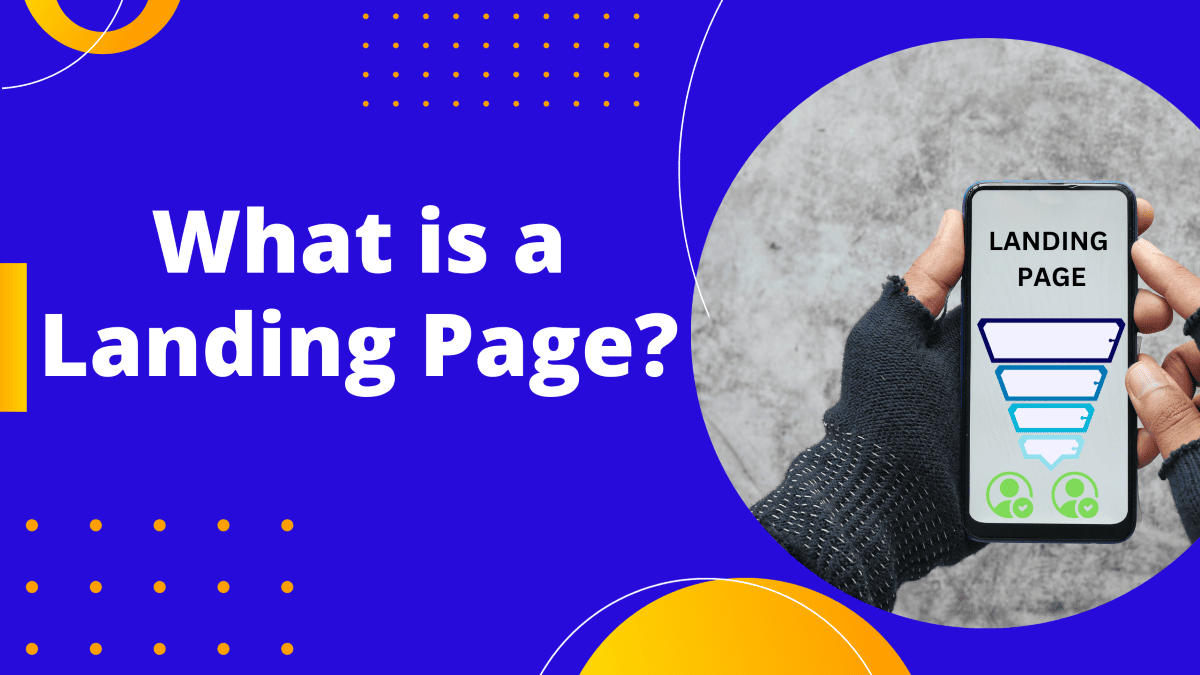
Ever stumbled upon a web page that immediately caught your attention, urging you to take action? That, my friend, is a landing page!
So, what is a landing page?
In the vast world of digital marketing and affiliate marketing, landing pages play a pivotal role. They’re not just any regular web page; they’re specially designed for a singular purpose – conversion.
Imagine having a tool in your marketing strategy that boosts your conversion rate, captures leads, or even sells a product directly. Sounds enticing, right?
Dive in as we unravel the magic behind landing pages, explore different types of landing pages, and share some stellar landing page examples. Let’s get started!
What is a Landing Page?
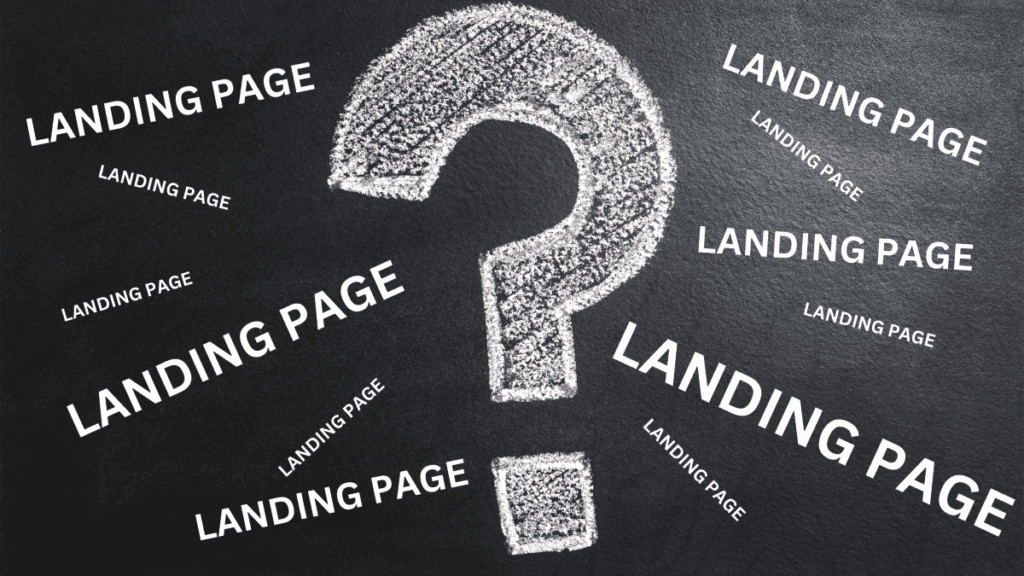
A landing page is a standalone page crafted with precision. When someone clicks on a link from an email, an ad, or any other digital platform, they’re directed to this specific page. The primary goal? Conversion.
A landing page isn’t just another page on your website. It’s a crucial element in digital marketing, aiming to convert you from a mere visitor to a potential lead or customer. It’s all about capturing valuable information.
For instance, you might land on a page that offers a special tutorial video. In exchange for accessing it, you provide your email id. That’s a classic example of a lead generation landing page in action.
So, when you come across a page urging you to sign up or buy, remember: that’s a landing page working its charm!
Remember, a landing page isn’t just a page; it’s an opportunity. An opportunity to connect, to inform, and most importantly, to convert.
What are the Different Types of Landing Pages?
Alright, let’s dive into the fascinating world of landing pages and explore the different types that exist. Remember, each type serves a unique purpose in the vast realm of digital marketing i.e. each type of landing page focuses on a specific need.
The 2 Main Types of Landing Pages
1. Lead Generation Landing Pages
Also known as “lead gen” or “lead capture” pages, this type of landing page is all about collecting data.
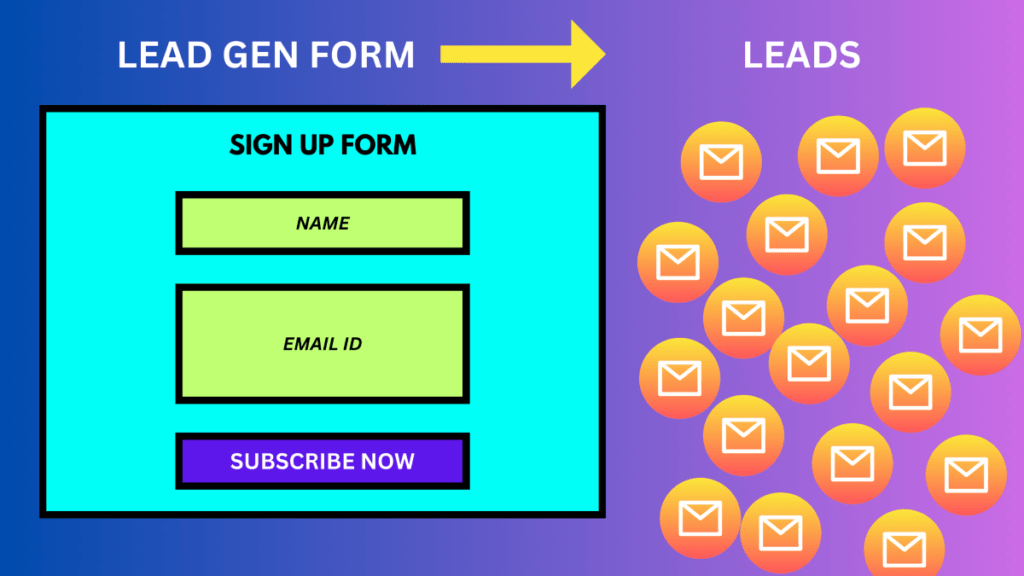
Think of it as a digital net, catching valuable information about potential customers.
The star feature?
A form that acts as the main call-to-action (CTA). This form might ask for names, email addresses, or even specific details like job titles.
In return, users might get a special eBook, a discount code, or access to an exclusive webinar.
The data collected not only helps in direct marketing but also refines your marketing strategy by understanding your audience better.
2. Click-through Landing Pages
These are the action heroes of the landing page world. Instead of forms, their spotlight is on CTA buttons.
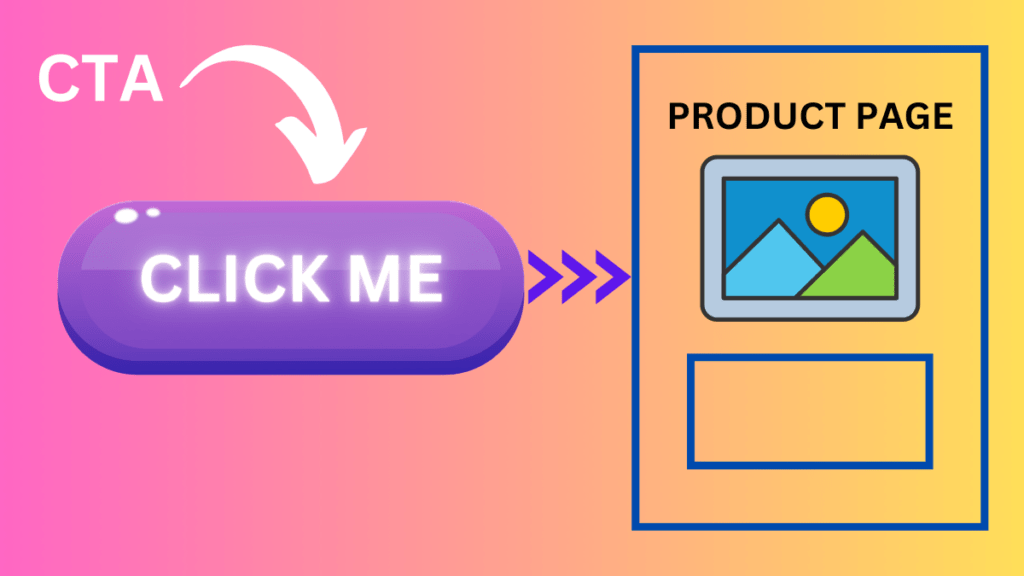
Click on one, and you’re taken to another page where the magic happens.
Maybe it’s a checkout page for that irresistible product or a sign-up page for a much-awaited webinar.
These pages are especially common on e-commerce sites, where the goal is to guide the user swiftly from interest to purchase.
They’re packed with persuasive elements, from detailed product info to glowing user testimonials.
The next time you’re crafting a marketing campaign, think about which landing page type will serve you best. And if you’re ever in doubt, just refer back to this guide!
How is landing page different from home page?
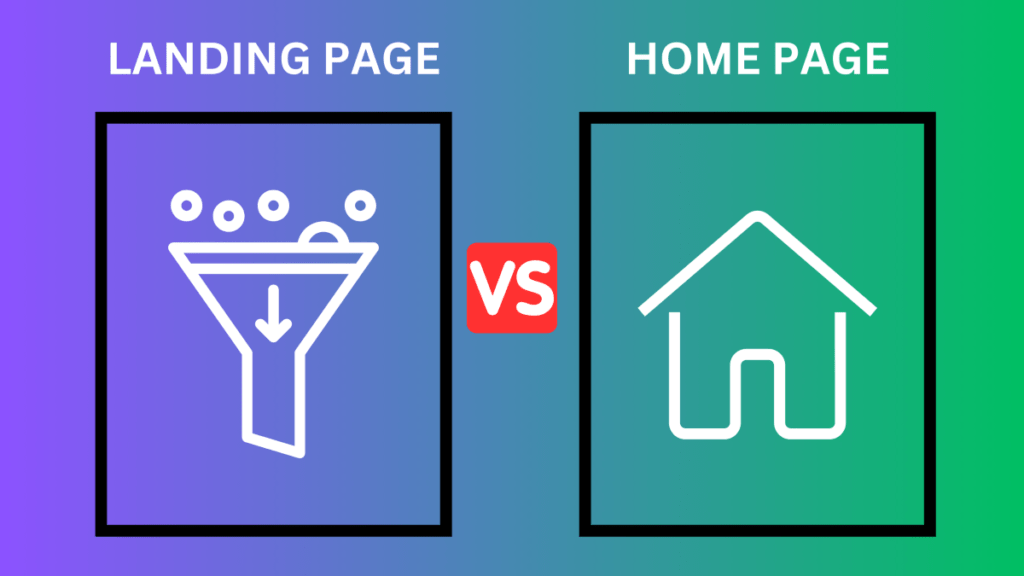
If you’ve ever been on the internet (which, let’s be real, you have), you’ve probably encountered both homepages and landing pages.
But what’s the difference?
Why not just use one for everything?
Well, my friend, they serve distinct purposes.
A homepage is like the front door of a house. It’s the main entry point to a website and contains general information about a company. It’s a gateway to other pages on the site where visitors can learn more.
Think of it as a central hub, giving visitors a taste of everything you offer.
Homepages may also have multiple calls to action (CTAs), encouraging visitors to explore different parts of the site, like checking out products, reading the blog, or signing up for a newsletter.
On the flip side, a landing page is a standalone web page, laser-focused on a single objective.
Its main goal is to convert visitors into leads or customers. Landing pages are designed to drive conversions, turning visitors into leads and customers.
They’re the result of a specific marketing strategy, directing users from a particular source, like an ad or email marketing campaign.
Unlike homepages, which can have multiple CTAs, a landing page usually has a single, focused CTA. Whether it’s to make a purchase, fill out a form, or download a resource, it’s all about getting the visitor to take that one specific action.
In essence, while a homepage gives an overview and directs visitors to various parts of a website, a landing page is all about getting visitors to take one specific action.
It’s like comparing a buffet (homepage) to a gourmet dish (landing page). Both are delicious, but they serve different purposes in the grand feast of digital marketing.
Benefits of a Landing Page in Your Marketing Campaign
Alright, let’s delve into the importance of landing pages in your marketing campaign. Landing pages are more than just a trend; they’re a powerful tool that can supercharge your marketing efforts. Here’s why:
- Boosting Conversions: One of the primary benefits of a landing page is its potential to increase conversions. A well-crafted and targeted landing page aims directly at an offer or next step, providing value upfront. This encourages site visitors to provide their information in exchange for a tangible reward.
- Gaining Audience Insights: By having separate landing pages with segmented offers, you can track which topics or products resonate most with your audience. This data can be a goldmine, helping you refine your marketing strategy and better target future campaigns.
- Growing Your Email List: Landing pages can help grow your email subscriber list. When visitors provide their email in exchange for your offer, you’re not just getting their contact; you’re getting a potential lead who’s shown interest in what you have to offer.
- Testing and Creativity: Landing pages offer a playground for marketers. You can experiment with landing page design, copy, and CTAs to see what resonates most with your audience. Plus, with tools likelanding page builders, this testing becomes even more accessible.
- Directly Tied to Business Goals: If you’ve set up a targeted & well-optimized landing page for a new product or service, you can measure metrics directly related to your business objectives. This direct correlation can help in refining strategies and focusing on what works.
- Adding Context to Offers: One of the standout benefits of a landing page is the added context it provides to your offers. It’s not just about getting a user’s contact details; it’s about providing them with valuable information or offers in a context that makes sense.
- First Impressions Matter: A sleek, well-designed landing page can leave a lasting impression on a visitor. It’s an opportunity to showcase your brand’s value and establish trust right from the get-go.
In essence, landing pages are a marketer’s best friend. They’re versatile, powerful, and when done right, can be a game-changer for your digital marketing strategy. Whether you’re looking to boost conversions, gain insights, or simply make a stellar first impression, landing pages have got you covered.
How to Create a Landing Page?
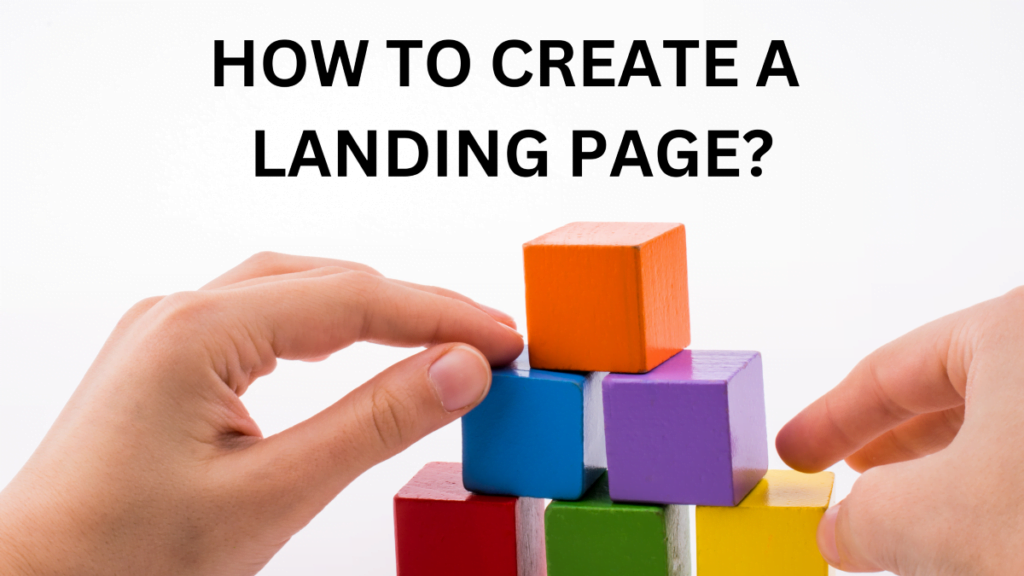
Alright, so you’ve learned about the importance of landing pages and their differences from homepages. Now, let’s dive into the exciting part: creating your very own landing page!
- Simplicity is Key: A landing page is designed around a single action. If a user gets distracted, they might not complete that action. So, keep your landing pages straightforward. For instance, it’s generally a good idea to avoid including a top navigation menu. Remember, if they navigate away from the page, you might lose out on a conversion.
- Use the Right Tools: There are various tools available to help you craft the perfect landing page. You can create a landing page using a landing page builder. For instance, the Landing Page Builder app from Semrush can assist you in creating and publishing high-converting landing pages, even if you’re not a coding wizard.
- Visual Appeal with a Hero Image: The hero image is a significant graphical element that enhances the visual appeal of your landing page. It should be big, eye-catching, and placed near the top. Some companies use literal representations of their product, while others opt for abstract or illustrative designs. Whichever route you choose, ensure the image complements the overall design and message of your landing page.
- Create an Engaging Title and Descriptive Subtitle: Your headline should instantly grab attention and convey the main benefit or proposition. The subheading can provide additional details or emphasize the value. Together, they should clearly communicate what you’re offering and why it’s worth the visitor’s time.
- Brief and Informative Supporting Copy: Sometimes, a little more detail can help. If your headline and subheading don’t cover everything essential, use supporting landing page copy to fill in the gaps. Keep it brief and consider using bullet points for clarity.
- Include a Form for Lead Generation: If your landing page’s goal is lead generation, you’ll need a form. Ask for essential information, but remember: the more fields you have, the less likely people are to fill them out.
- Strong Call to Action (CTA): This is the heart of your landing page. All landing pages must have a clear call to action. The CTA button should stand out and clearly indicate what will happen when clicked. Whether it’s “Sign Up,” “Buy Now,” or “Learn More,” make sure it’s compelling and obvious.
- Optimization: Once your landing page is up and running, don’t forget to optimize it for search engines. Use specific keywords that potential customers might use when they’re ready to convert.
Creating a landing page might seem daunting at first, but with the right tools and approach, it can be a fun and rewarding process. Remember, the goal of a landing page is to convert visitors into leads or customers. So, focus on clarity, simplicity, and a strong call to action.
Landing Page Best Practices: What Makes a Good Landing Page?
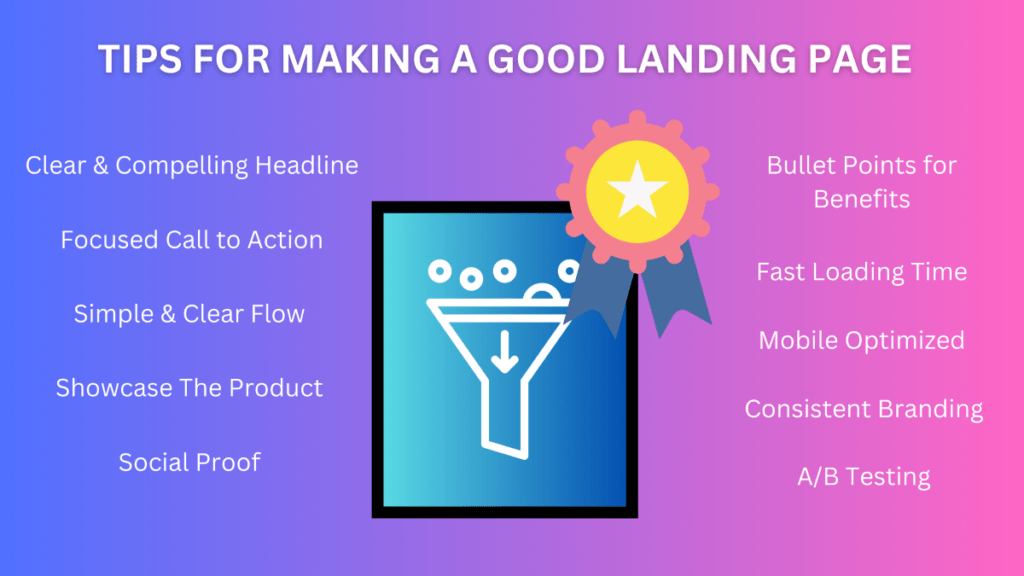
Alright, so you’ve got a grasp on what a landing page is, its types, and how it’s different from a homepage. Now, let’s dive into the nitty-gritty: what makes a landing page truly effective? Here are some best practices to ensure your landing page not only looks good but also converts like a champ:
- Clear and Compelling Headline: Your headline is the first thing visitors see. Make it catchy and relevant to what you’re offering. Remember, first impressions matter!
- Focused Call-to-Action (CTA): A landing page’s primary goal is conversion. Ensure your CTA is clear, concise, and compelling. Whether it’s “Download Now”, “Sign Up”, or “Buy Now”, make it stand out.
- Simplicity is Key: Avoid overwhelming your visitors with too much information or choices. Remember the “paradox of choice”? Too many options can lead to decision paralysis. Stay away from longer landing pages.
- Showcase the Product or Service: Use images, videos, or demos to give visitors a clear idea of what they’re getting. Visual aids can enhance understanding and boost trust.
- Social Proof: Testimonials, reviews, and endorsements can significantly increase trust. Every landing page should always have some form of social proof. If others vouch for your product or service, newcomers are more likely to convert.
- Bullet Points for Benefits: List out the benefits of your offering using bullet points. It’s easier on the eyes and helps visitors quickly grasp the value you’re providing.
- Fast Loading Time: A slow-loading page can be a conversion killer. Ensure your landing page loads quickly to keep potential leads engaged.
- Mobile Optimization: With many users accessing sites via mobile, ensure your landing page is mobile-friendly. A responsive design is a must in today’s digital age.
- Consistent Branding: Your landing page should align with your overall brand in terms of colors, fonts, and messaging. Consistency builds trust.
- A/B Testing: Always test variations of your landing page to see which one performs better. Whether it’s different headlines, images, or CTAs, testing helps refine your strategy.
Remember, the essence of a good landing page lies in its ability to guide visitors towards a specific action without distractions. It’s all about creating a seamless and engaging experience that nudges the visitor to convert. So, keep these best practices in mind, and you’ll be on your way to crafting high-converting landing pages!
How to Optimize Your Landing Page For High Conversion?
So, you’ve crafted a stunning landing page. But how do you ensure it’s not just pretty but also effective in driving conversions? Let’s dive into the best practices to optimize your landing page for those sweet, sweet conversions:
- Message Consistency: Ensure your landing page’s messaging aligns with your ads. If your ad talks about a special discount, your landing page should echo that. This creates a seamless experience and assures visitors they’re in the right place.
- Prioritize Above-the-Fold Content: The term “above the fold” refers to what’s immediately visible without scrolling. This space is prime real estate. Your headline, main proposition, and CTA should be clearly visible here.
- Guide the Visitor’s Eye: Use visual cues, like arrows or contrasting colors, to guide visitors towards your CTA. The design should naturally lead the eye to the action you want them to take.
- Demonstrate Your Offer: Show your product or service in action. Whether it’s a demo video, an infographic, or high-quality images, visuals can help convey the value of what you’re offering.
- Minimize Distractions: A landing page should have a singular focus. Remove unnecessary links, navigation bars, or any other elements that might divert attention from the main CTA.
- Authentic Social Proof: Incorporate genuine testimonials or endorsements. Real feedback from real people can significantly boost trust.
- Clear and Engaging Copy: Your copy should be easy to understand and compelling. It should convey the benefits of your offer in a concise manner.
- Optimize for Speed: A slow-loading landing page can deter potential conversions. Ensure your page loads quickly, especially on mobile devices.
- Responsive Design: With a significant chunk of users on mobile, your landing page should look and function well across all devices.
- Test, Test, Test: A/B testing is crucial. Try out different headlines, images, or CTAs to see which version resonates more with your audience.
- Consider Templates: If you’re just starting out or short on time, using a professionally designed template can be a great starting point. Customize it to fit your brand and message.
Remember, the ultimate goal of your landing page is to convert. Every element, from the headline to the CTA, should work in harmony towards that goal. By following these best practices and continuously testing and refining, you’ll be well on your way to creating landing pages that not only look good but also deliver results!
How to Drive Traffic to Your Landing Pages?
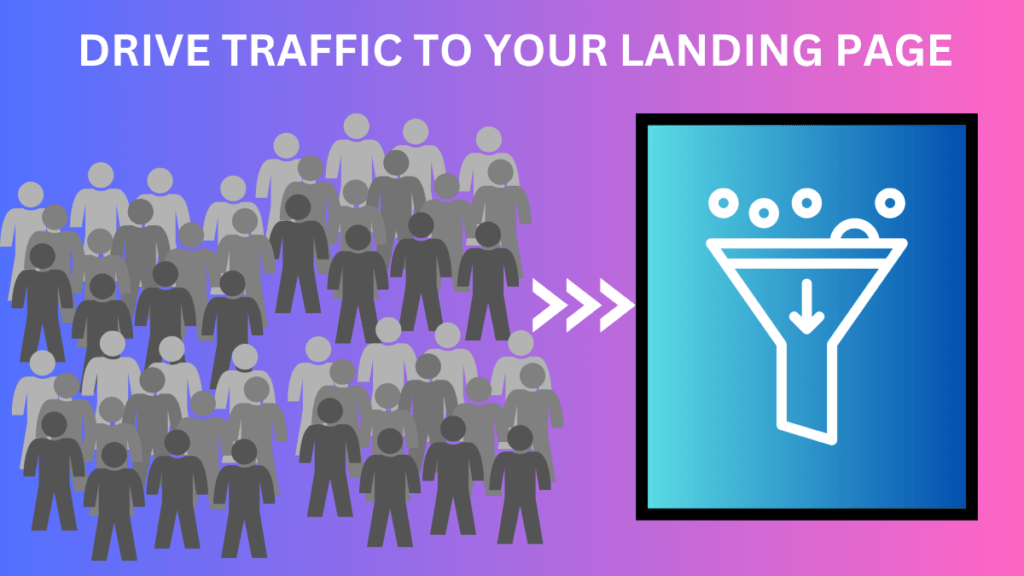
Alright, so you’ve crafted this fantastic landing page, but now you’re scratching your head, thinking, “How do I get people to actually see it?” No worries, my friend! Let’s dive into some tried-and-true methods to drive traffic to your landing pages and get those conversions rolling in.
- Paid Search Traffic: Most search engines, like Google and Bing, offer paid advertising. When someone searches for a term related to your product or service, your ad can appear at the top of the search results. The beauty of this is that you can target specific search terms, ensuring that the traffic you’re driving is relevant. And remember, always direct these clicks to a dedicated landing page that matches your ad copy.
- Paid Social Traffic: Platforms like Facebook, Instagram, Twitter, and LinkedIn allow you to run ads targeting specific demographics or interests. This means you can reach potential customers even before they start searching for your product. Each platform has its unique strengths, so choose the one that aligns best with your target audience.
- Email Campaigns: Email remains a powerhouse in the digital marketing world. With a well-crafted email, you can entice readers with your offer, and your landing page can fill in the details, guiding them towards that all-important call to action. Whether you’re nurturing existing relationships or reaching out to potential new customers, the combo of emails and landing pages is dynamite.
- Organic Search Traffic: This refers to visitors who find your landing page through unpaid search results. By creating high-quality, relevant content on your landing page, you can improve its ranking in search engine results. While it might take some time and effort (hello, SEO!), the traffic you gain from organic search is often highly targeted and more likely to convert.
- Diverse Marketing Channels: Think outside the box! Consider running Google Ads, native ads during podcasts, creating interactive quizzes, or even using traditional print ads with QR codes. The key is to understand where your audience hangs out and how best to reach them.
- Optimize for Mobile: A significant chunk of your audience will likely visit your landing page on mobile devices. Ensure your landing page is mobile-responsive, providing a seamless experience whether they’re on a desktop or smartphone.
Remember, while it’s tempting to throw money at ads to increase traffic, it’s equally crucial to ensure your landing page is optimized for conversions. Think of it like this: there’s no point in filling a bucket with water if it has holes in it. So, before you ramp up your traffic-driving efforts, make sure your landing page is in tip-top shape to convert those visitors!
Now, go out there and drive that traffic! Your landing page is waiting.
Examples of Landing Pages
Github For Enterprises
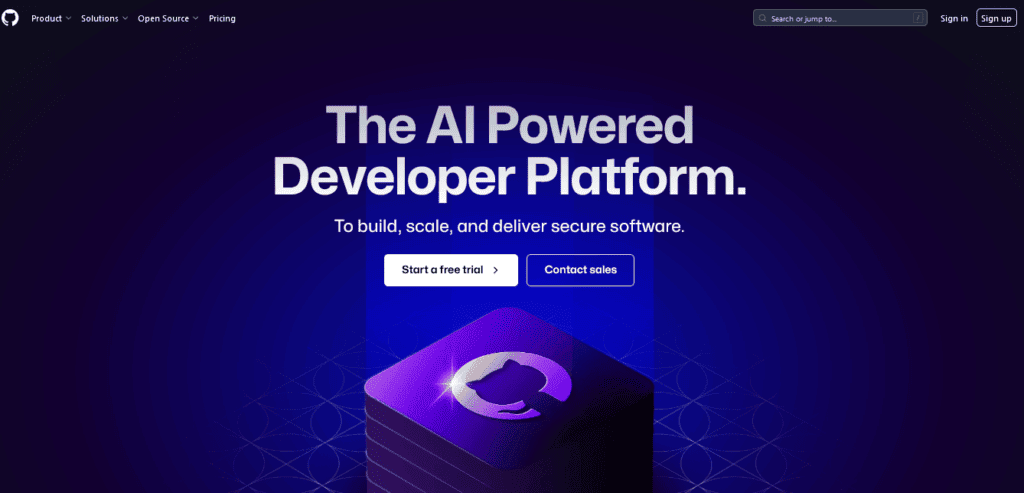
GitHub’s “GitHub for enterprises” landing page is visually appealing and provides comprehensive information to aid user conversion. It has striking visuals with contrasting colors. The copy on the page is brief and it highlights essential features. Customer logos and testimonials are clearly displayed to provide social proof. Dual CTAs are present catering to different user intents.
Netflix

Netflix‘s landing page is concise and straightforward, focusing on the primary goal of getting users to start their membership. There is a single field above the fold for easy email entry. No confusion. The value proposition is clear and assurance of easy cancellation is provided. All other details are clearly mentioned on the page increasing the trust of the customers.
Monday.com
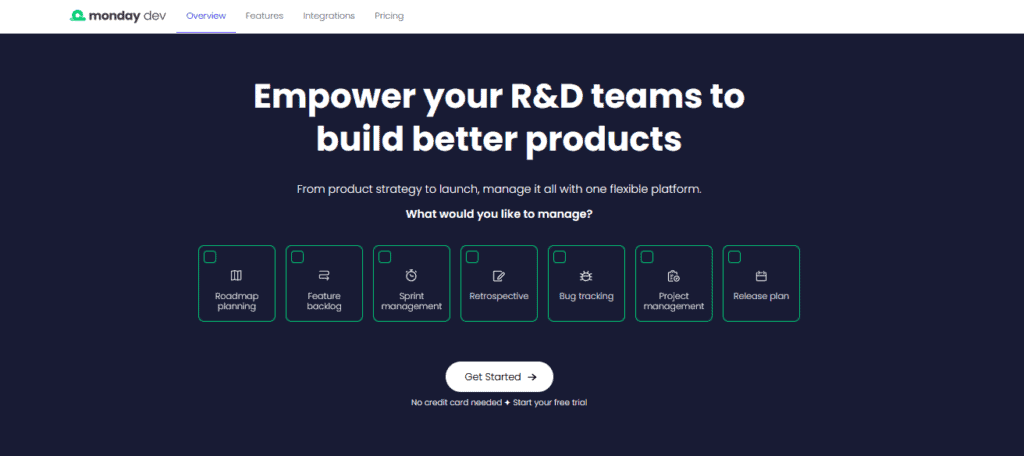
Monday.com‘s landing page for product developers emphasizes interactive engagement. Users are prompted to choose the activities which they plan to perform before accessing the platform. The design is sleek, with standout white text on a dark background, and “product R&D” highlighted to resonate with the target audience. The page adeptly addresses the specific needs of product dev teams, blending simplicity with clear messaging.
Conclusion
In the dynamic world of digital marketing, the landing page stands out as a game-changer. It’s not just another web page on your website; it’s a targeted tool designed to convert visitors into loyal customers. From understanding the very essence of what a landing page is to diving deep into its types, best practices, and optimization techniques, we’ve journeyed through the essentials of crafting a high-converting landing page.
Remember, the goal of a landing page is to convert visitors, whether that’s capturing an email, making a sale, or any other action beneficial to your marketing strategy. The benefits of a landing page in your marketing campaign are undeniable, offering a focused and distraction-free environment for your audience. And with the right strategies, you can drive ample traffic to these pages, ensuring your message reaches its intended audience.
As we’ve seen from the landing page examples, there’s no one-size-fits-all. It’s all about understanding your audience, being clear in your message, and continuously testing and optimizing. So, whether you’re just starting out or looking to refine your approach, remember: a well-crafted landing page can be your golden ticket in the vast carnival of digital marketing. Dive in, experiment, and watch those conversion rates soar!
FAQ
What is a landing page in website?
A landing page, in the digital marketing context, is a standalone web page distinct from your main website. It’s designed with a single, focused objective in mind. Essentially, a landing page is the next step after any marketing promises you’ve made in your content. It serves as a platform where visitors can take action, such as signing up for an offer or providing their contact information in exchange for valuable content. Unlike a homepage that offers multiple paths for a visitor, a landing page is tailored to guide visitors towards a specific action, making it a powerful tool for converting visitors into leads or customers.
What is a landing page vs homepage?
A landing page is a specialized, standalone web page crafted for a specific marketing objective, often prompting visitors to take a particular action. On the other hand, a homepage is the main entry point of a website, providing a broad overview of the brand and its offerings. While landing pages are tailored for conversion, homepages offer multiple navigation paths and a more comprehensive introduction to the brand. In essence, landing pages are campaign-specific, while homepages serve as a gateway to the entire website.
What is the difference between a website and a landing page?
A website is a comprehensive digital platform consisting of a homepage and various other pages interconnected with a navigation menu. It provides a broad overview of a brand or entity. In contrast, a landing page is a specific, standalone page designed for a singular purpose, such as opt-ins, sales, or thank-you messages. Essentially, landing pages are individual pages on a site that visitors can directly “land” on from external sources, focusing on a particular action or message.
Do I need a landing page if I have a website?
Even if you have a website, a landing page is essential for specific marketing goals. While your website provides a comprehensive overview of your brand, a landing page is tailored for a singular purpose, like promoting a product or capturing leads. It’s designed to eliminate distractions, focusing solely on converting visitors based on a particular campaign or offer. In essence, while websites navigate users through various aspects of your brand, landing pages drive them towards a specific action.
Should your homepage be a landing page?
While a homepage serves as the main gateway to a brand’s entire website, introducing visitors to its offerings and values, a landing page is more focused. A landing page is designed with a singular purpose in mind, such as promoting a specific product or capturing leads. It’s tailored to drive a specific audience to take a particular action, eliminating other distractions. In essence, while a homepage provides a broad overview and multiple calls to action, a landing page zeroes in on a specific message or offer, aiming to convert visitors based on that singular goal.
What is considered a landing page?
A landing page is a standalone web page distinct from a website’s main navigation, specifically designed for a marketing or advertising campaign. It’s where a visitor “lands” after clicking on a link in an email, ad, or social media post. Its primary goal is to prompt a specific action or conversion, such as signing up for a newsletter or purchasing a product, by providing targeted content and eliminating distractions.
What is the purpose of a landing page?
The primary purpose of a landing page is to guide visitors towards a specific action or conversion, such as signing up for a newsletter, downloading a resource, or making a purchase. It provides targeted content, tailored to a particular audience or campaign, and is designed to eliminate distractions, optimizing the user’s journey towards the desired outcome.

![Make Money with Affiliate Marketing Without a Website [2023]](https://www.parulraj.com/wp-content/uploads/2023/09/Aff-Mkt-Without-website-feature-image-768x432.png)
